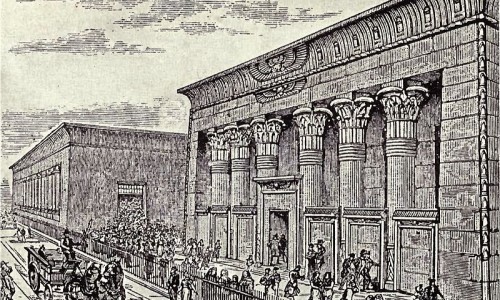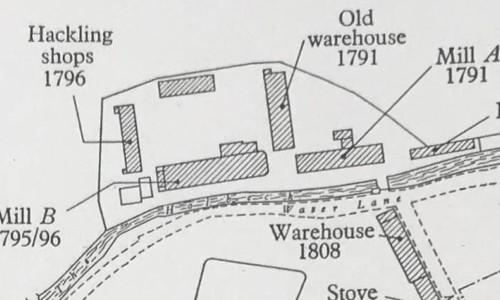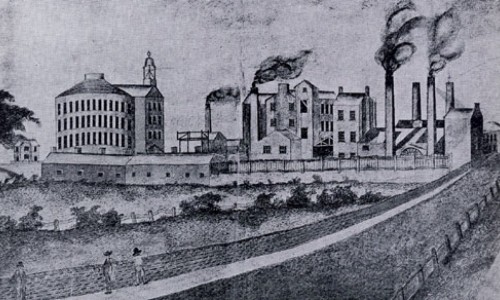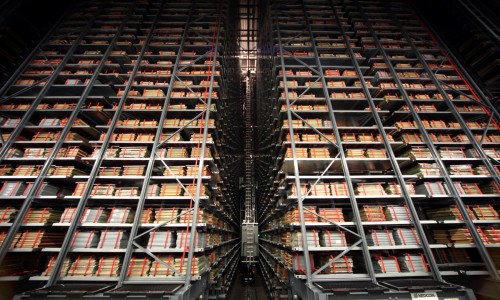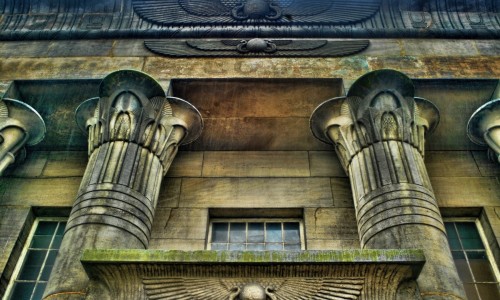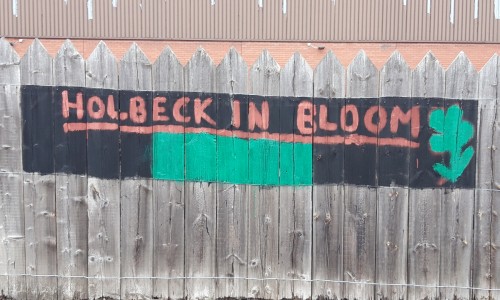Design Re-defined: the audacious brilliance of Temple Works
October 30, 2019
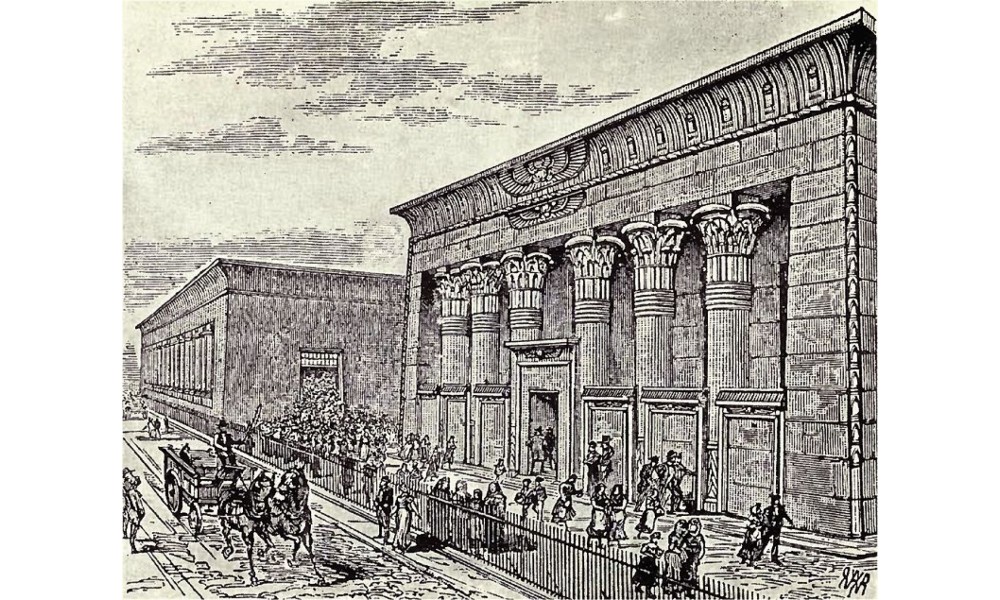
Words can inspire and energise, or they can hurt and reveal the truth. There are many individual words that have been used to describe the Temple Works building in South Leeds over the years; audacious, grandiose, extravagant, unique, innovative, perhaps even incongruous. Each word was appropriate in its own way, but not all of them still seem to apply. Today, you are more likely to use neglected, weathered, hazardous or forlorn. And yet it is still standing, as a landmark of a sort, and its inherent design qualities still exist as evidence of one of the most remarkable construction achievements to come out of the industrial revolution.
And as the custodians of the building, CEG are tasked with trying to turn around time, and revive Temple Works as not just a design classic but as “the jewel in the crown” of Leeds architecture. CEG and the city have to reimagine this two acre single room of nineteenth century mass production to some new incarnation of future innovation. And rather than walk or drive past its boarded-off and scaffold-strewn inhibition as if it isn’t even there, the people of Leeds need to be drawn to it once again and to celebrate its brilliance and its almost absurd flamboyance. To do that, we need to understand quite why there is such an obsession with this dilapidated edifice to over-ambition, and indeed, quite why CEG has managed investment of around £2million on understanding its structure and keeping it upright over the last two years.
Temple Mill, as it was originally called, is ‘listed’ for its “special architectural or historical interest”, and has been given a Grade I designation making it of “exceptional interest”. Only 2.5% of the near half a million listed buildings in the UK are Grade I; and even that description and status doesn’t get close to doing it justice.
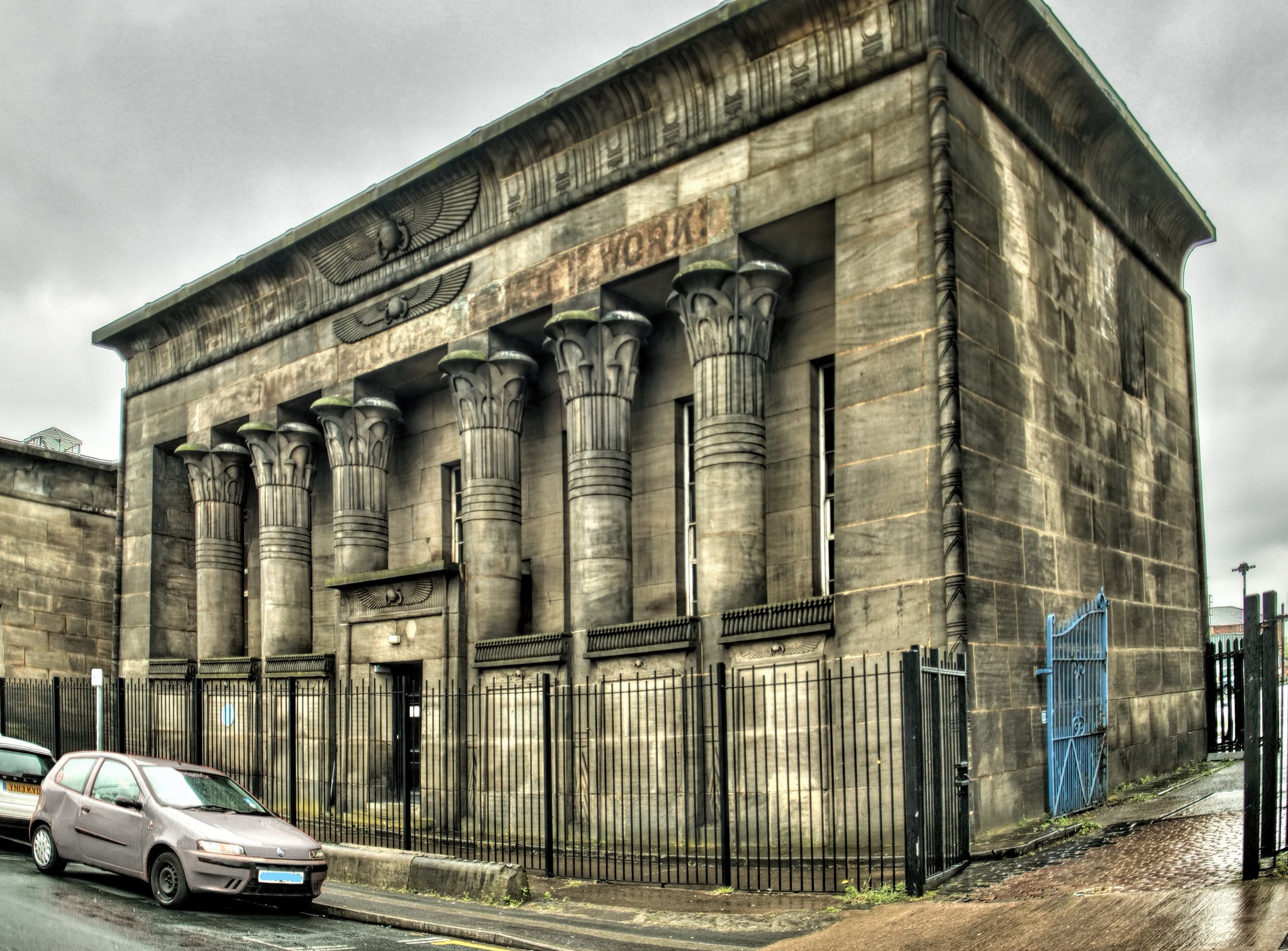
(Photo credit: jcw1967/Flickr - the famous Egyptian frontage of the Temple Works Counting House)
Many sources state that Temple Mill was designed by renowned Egyptologist Joseph Bonomi. It is easy to come to that conclusion given its detailed Egyptian flourishes. But the design of the main mill building came from the engineer and architect James Combe, who had carried out other works for mill owner James Marshall. The much smaller office building and counting house, which features the prominent Egyptian columns and other details in its facade, was added later and is an accurate reincarnation of the Temple of Horus at Edfu, in Egypt. This had a very complicated design genesis with input from various parties, principally Bonomi and the renowned Egyptologist David Roberts, with executive architects, a Mr Robert Hay and a Mr Alexander, interpreting the sketches provided by them. Bonomi declared that the finished building would be “the most respectable piece of Egyptian architecture that can be seen on this side of the Mediterranean”. And so it is, due to James Marshall, son of the company founder John, from whom the remarkable architectural theme had come in the first place.
Quite why an Egyptian-style temple was built amid the soot, smog, effluent and disease of this over-populated section of industrial Leeds is a story in itself, and this, along with how the Egyptian detail was agreed upon and delivered, will be the subject of a future article, and a very worthy one at that.
For now, the ancient and mysterious inspiration for the building’s external visage is just one of many design curiosities which contribute to this building’s unerring fascination. These don’t focus simply on aesthetic value, but also on functional and even environmental benefits which, design-wise, were more than a century away from being accepted as standard techniques or being on the radar of any developer commissioning a similar project. That, in essence, is where the captivating allure of this building begins.
There are five main features which identified Temple Mill as a unique building both in 1840 when it was built, and still today:
- It was a single storey mill spread across two acres, when standard practice on this scale was to build multiple storeys often up to six or seven
- The machines’ drive gear and engine were housed in a basement to save space and aid safety and efficiency
- It had a grass roof to control humidity within the mill
- The building had the world’s first hydraulic lift to transport sheep to graze on the grass roof as sheep constituted its maintenance regime
- The Egyptian styling of the eastern frontage of the mill
Any of these features in isolation would be considered remarkable for a building designed in 1838 and built two years later, but the foresight, dash and bravery in incorporating all five into the building’s design demonstrated innovation and forethought on an immeasurable scale.

Yet, in truth, the curiosities didn’t end there. The main mill building was originally one bay shorter, and when the office building/counting house was added in 1842, an external staircase was enveloped into the main building and an extra bay added. The vast basement below the main mill floor also housed a small tram system that was used to transport materials and goods to various processes.
But idiosyncratic design features aside, by far the most impressive curiosities were the pioneering aids to sustainability, which singled out Temple Mill as a building way ahead of its time and an example of unprecedented forward-thinking and lateral vision.
These 19th century climate control measures included the grass roof, which was undulated for water drainage purposes, and where the water ran down hollow tubes in the 60-odd iron pillars used as roof supports to sewers below ground. This water was filtered at the top of the iron tubes by a wire mesh covering, with the aim that only water and not earth re-entered the water course.
A major justification for having a single-storey building was to allow a uniform supply of natural light from above, via conical skylights, rather than having light coming from the side via windows. This was a time before electricity of course, so there were no energy usage benefits to this, but the Marshalls’ thinking was all about efficiencies, and it was thought that a uniform light distribution from above would benefit workers as it would cast no shadows to affect vision for the workers when the natural light was fading.
The sheep can also be considered a sustainable green benefit rather than using machinery to cut the grass on the roof, and it is a myth that the sheep actually lived on the roof. They were taken up at intervals by the sheep lift – the construction for which still exists and is clearly visible in the south west corner of the roof structure – and lived a few yards away in a section of allotments near what is now Sweet Street West, which the Marshalls provided for their workers.
Flax spinning was a dirty process, given that flax is a plant which was laboriously harvested, dried and steeped in bundles before it even reached the mill. Flax-spinning created a lot of dust through the breaking and heckling processes, which were repetitive and were often carried out by children in the early years. Quite soon into Marshall’s flax revolution, his engineer Matthew Murray patented automated heckling machinery which made the process far more efficient and reduced human exposure to the dust. Nevertheless, the Temple Mill design incorporated ventilation systems never before considered as integral to a building’s infrastructure, and were provided foremost as a safety measure, as the dust was a major fire hazard.
(Photo source: Stephen Levrant Heritage Architecture Ltd - the 1930s replacement skylights on the Temple Works roof)
In the Marshall and Combe schematic plan for the main mill building, ventilation was provided through the novel design of the conical skylights and also through a system that travelled out of the building in the north east corner. Though, it has to be said, this measure was people-led, as this was a time before very much health and safety or environmental legislation regulated factories.
The fundamental concept and justification for Temple Mill was as an ancillary building to the existing ‘Mill D’ to the north. This was the closest of the three-building complex now known as Marshall’s Mills and Temple Mill, despite the investment in ventilation, was designed to progress the ‘clean’ flax-spinning processes that the Marshalls had pioneered. Temple Mill was not a weaving mill; it produced flax yarn in bundles, and that was then sent to the mill jointly owned by Marshall and the Benyon Brothers in Shrewsbury, where the yarn was woven into linen.
In essence, the building’s design and concept was a last stab at keeping pace with a changing industry. Alas, in reality, it was a dying industry, and there was nothing the Marshalls could do about it and hence, Temple Mill was quickly seen as the family’s zenith and the most opulent swipe at proclaiming their own wealth and influence. From there it was a downward spiral for both the Marshall business and the flax-spinning industry, but that doesn’t detract from the ingenuity of Temple Mill’s breath-taking overall scheme.
There were many advantages to building a single-storey mill as opposed to another towering multi-storey mill, which would have matched the others both in the Marshall Empire and in this choking industrial enclave of Leeds. Not the least of these benefits was the fact that the vast open plan mill that Temple Mill became was £4,000 cheaper to construct than a multi-storey building of the same overall space.

(Image source: Knowledge is Power, Charles Knight, 1859 - the inside of the main mill building)
It is likely, therefore, that the principal driver for this innovation was cash, rather than innovation for its own sake. Marshall had calculated that a single storey mill would incur very substantial savings in construction costs. He and Combe had a one-third size model constructed to test the structural systems and for costing purposes. All the other innovations were the result of invention being born of necessity, and in the process the remarkable technological achievements emerged.
The total cost would be in the region of £24,000 though, and the founder, John Marshall, now in semi-retirement, took some initial convincing over the single-storey design.
Other advantages illustrated the dynamic progress that grand scale manufacturing had undertaken in the first part of the 19th century and, particularly, the kind of singular foresight and initiative the Marshall’s had earned their millions from:
- A single storey mill aided the convenience of managerial supervision (and supervision for parents who also had their children working with them)
- It aided the efficient movement of people, machinery and materials
- It allowed easier access to machinery
- It allowed a uniformity of temperature and moisture which was critical to the healthy production of fine yarns
- It prevented any air currents forming
- It allowed for a simplicity of machinery installation as drive belts and drive gear ran through the floor to the downstairs basement, also saving space.
The idea for a single-storey building was not entirely original, though nothing had been done on this scale. James Marshall had befriended a mill manager in Perthshire, Scotland called James Smith. His Deanston Mill was a single storey weaving shed, had a similar brick-arched structure to Temple Mill and was completed in 1834, albeit at only one third of the size of what Temple Mill would eventually become. Nevertheless, Marshall was indebted to Smith and admitted so in an address they both later made to the Institution of Civil Engineers in 1842.
Construction of Temple Mill, however, was not without its issues. Mid-build in June 1839, two workers died when six of the ten roof arches completed at the time collapsed after their timber supports were removed. Although wet weather during construction was blamed for the accident, the building’s structural design was subsequently amended. In continuing the construction, a false roof was erected above the new roof, with sawdust laid on top to help with weather-proofing, but a week later a young boy was injured following another partial collapse of the roof. And even after completion and the part-installation of some machinery, another accident saw several spinning frames destroyed when two roof arches collapsed in October 1841.

(Photo source: CEG - the main mill building today showing the uniform light distribution and the secondary tie bar system around the top of the cast iron columns)
An entire secondary tie bar system with specially cast iron collars had to be introduced retrospectively to lend stability to the roof and the cast iron pillars, and best available materials for their day were used. Sadly, much of those are not now fit for purpose and have led to many of the structural challenges CEG are now working with various partners to solve.
In an unrelated incident, it is believed that one of the sheep that grazed the roof once fell through it and directly into the frenzied activity of the main mill building below, whereupon it was propelled across the room by the spinning machinery in a scene that skirted between the slapstick and the deeply macabre.
At the time of opening, in 1840, the main mill building was the largest single room in the world, at 400 feet long and 200 feet wide, and it held this title until Crystal Palace was built in Hyde Park, London for the Great Exhibition in 1851.
The basement of the main mill building was a series of brick vaulted passages under its entire length. This carried an installation of various gas and water pipes and housed a carpenter’s shop and warehousing, as well as the aforementioned tram system along its central corridor and the gearing, shafts and steam engine for the upstairs spinning machinery. Another major feature of the basement was the provision of baths for the workers, with cold water baths being free of charge and warm water baths costing one penny.

(Photo credit: Leodis.co.uk - the basement pictured in the 1950s)
Much of the basement remains unaltered today, although only the eastern side of it has been used since Marshall’s occupancy – which ended in 1886 – and some areas have not been accessed for over 100 years. A 1940s air raid shelter is also still in situ and a recent survey unearthed several piles of discarded shoes, tankards, newspapers, bobbins and buttons and other ephemera thought to date back to the 1880s.
Undoubtedly, however, the grass roof is the feature of Temple Mill that most people know about and which has been absorbed into Leeds folklore as something of an urban myth, but it was definitely there, and for good reason.
Producing spun yarn from flax requires moisture and a consistent level of humidity and temperature to be maintained. Marshall and Combe calculated that they could achieve this with a grass roof. Underneath the grass, a level of soil on top of the brick arched roof acted as insulation and made for relatively comfortable working conditions below all year round. The grass was primarily grown to maintain the integrity of the soil layer, and below the soil a layer of lime and coal tar weatherproofed the brickwork and was unaffected by direct sunlight because of the grass and soil above it.
In truth, the ‘genius’ of the grass roof and its inherent humidity control, was partly born out of necessity. At this time there were no ‘flat roofs’ as we know them today. There was no roofing felt or large-scale asphalt. The principal covering for roofs was tiles or slates but they could not be laid in flat or undulating surfaces. The only other alternatives of lead or zinc would have been prohibitively expensive at such a scale. Hence, the ingenious solution of a built-up earth covering, with the environmental benefits it accrued. However, as a point of interest, it did not become a precedent for other industrial buildings.
On the roof itself there were 66 equidistant 10-foot-high glass conical skylights, each with a lantern style top which contained three ventilators. These appeared to resemble huge greenhouses and coupled with the grass and the grazing sheep could give the impression of a strange alien landscape to anyone venturing up there oblivious to what they might find.

(Image source: Useful Arts and Manufacturers of Great Britain, 1846 - the much bigger scale of the original conical skylights and the 'alien' landscape of the roof)
The sheep lift was an original part of the building’s design and there was also a hoist system and a staircase, although, of course, sheep can’t climb stairs. There is evidence that sheep were used to graze the grass at least until the 1860s, around the time that the sheep falling through the roof brought an abrupt end to what had grown to be seen as a gimmick and a publicity stunt. In 1930, long after the Marshall’s business had vacated the building and it was owned by James Rhodes Wholesale Clothiers, the grass and soil roof covering was replaced in whole by a reinforced concrete slab. This work also involved in-filling the cast iron columns previously used for drainage, and the replacement of the original skylights with much smaller galvanised steel framed-lights with Georgian-wired glass. These lights are still in place today, although some have been vandalised.
While this work was done because the room below no longer needed to be humidity-controlled, it has also contributed to the current issues of instability, as the cast iron columns are now holding up considerably more weight than they were originally designed to 181 years ago. Furthermore, a layer of asphalt has been added in recent years which has failed, and together with the lack of drainage across a flat roof, has led to considerable water ingress, an issue the original 1840 structure never had to deal with and not a great advert for more modern building materials or the engineering that led to such a decision.
Two years after the main mill building was completed the counting house was constructed adjacent to it. This needed a long counting room and was also used mainly as office space. James Marshall was generally unhappy with the Egyptian detail that Combe had furnished the mill building with, and therefore enlisted the help of Egyptologists David Roberts and Joseph Bonomi for the counting house design. This resulted in a more faithful depiction of what Marshall wanted, but the project wasn’t without its hiccups. More detail on this in a future article.
The internal design of the counting house was more traditionally Victorian and remains largely untouched today. But it is the six gritstone columns and the carved detail on the external façade that provides the main feature and is the striking visage that most people can picture in their mind whenever Temple Works is mentioned.

(Photo source: Stephen Levrant Heritage Architecture Ltd - the roof today showing the original rectangular sheep lift construction on the bottom right)
Due to the difficulties of construction, and the various design problems and accidents experienced, it is very likely that the out-turn cost of constructing Temple Works as it originally and brilliantly was, left no advantage over the traditional multi-storey mill, at least financially. The fact that the design was never attempted again rather confirms that.
But as a design curiosity, Temple Works is a unique building in Leeds and it has significant national value for that reason alone. Nowhere else will you see evidence of such initiative and character. And the building also has value in other ways; evidentially, historically, aesthetically and as a cherished local asset. Temple Works still tells us an awful lot about the Marshall Empire and how it succeeded in Leeds, and it holds special value for its technical innovation, its eccentricity and as a key landmark in the Holbeck area, and specifically the district now named as ‘Temple’ in its honour.
Temple Works gives the area a firm identity and has done for 181 years. Despite its current troubles, the value of it still shines through, and much work is being dedicated so that it will continue to shine. As a fearless act of contrariness, the aspiration is that it will continue to buck all trends and in fact be restored to greatness and become a catalyst for change. All around it will be transformed whilst Temple Works stands firm. They said the building of Temple Works re-wrote the rule book, but when considering design exclusivity and societal bravado like this, it’s clear there really were no rules.


.jpg&w=500&h=300)
